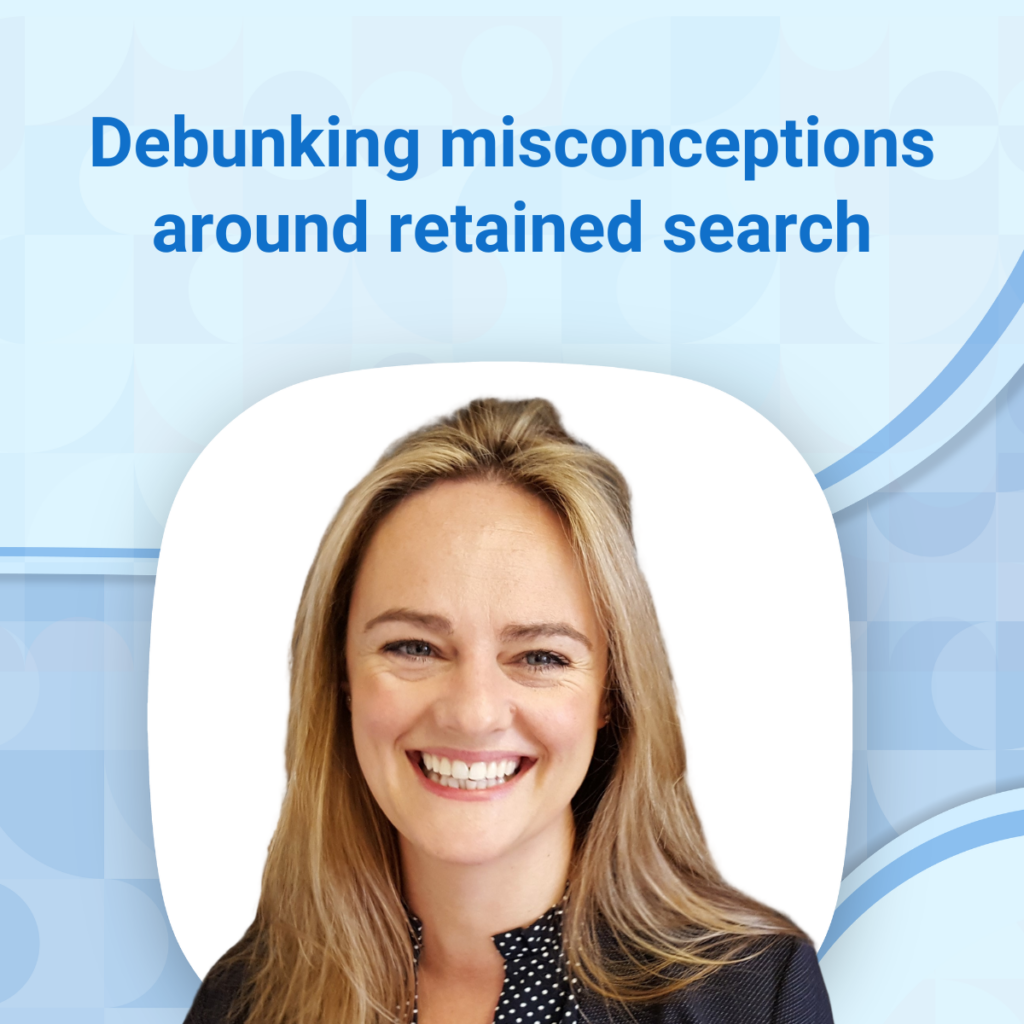Recruitment is a dynamic field, full of complex strategies and approaches. And we often get stuck in familiar patterns, particularly when choosing between contingent and retained search methods.
But do we really understand what we might be missing out on?
These two methodologies seem like entirely different worlds, often leading to confusion and misconceptions, especially around the concept of ‘retained search.’
Now let me help you debunk your retained search misconceptions so you can expand your recruiting strategy.
Decoding retained search
Retained search might sound like an elite club exclusive to top-billing executive search firms. But that’s not the case. Adopting a retained approach can assure you’re paid fairly for all your work on each assignment, converting even tricky searches into secure paychecks.
When I mention the phrase retained search to contingent recruiters, I get differing responses that fall into the following categories:
“I need 10+ years of experience to sell retainers.”
“Retained is only for senior hires.”
“My clients won’t buy retained search.”
“Retained won’t work in my market.”
Not only do these objections arise, but there needs to be more clarity about what retained search is. Ultimately, shying away from selling a retained solution stunts your ability to predict forecastable revenue, and scaling your business becomes a tall task.
The problem with contingent recruitment
A typical contingent recruiter works between 5-15 jobs simultaneously.
Every contingent recruiter, working on a no-win, no-fee basis, needs a grading system to help them prioritize and focus on the jobs they are most likely to place.
For example, an ‘A’ grade job would tick these boxes:
- A job at a fantastic company that has a great employer brand
- A vibrant and easily commutable location
- A highly sought-after career path
- The client would be easily reachable and prompt with feedback
- Easy to fill or exclusive to you
However, anything that isn’t as easy would look more like:
- In-demand skillset is required
- The role is in an undesirable location
- The company brand is non-existent
With these points, the job starts to go down the list of priorities. If there’s competition involved, the job tends to move even further down the list because it’s an even higher risk to spend time on as it’s even less likely to result in a fee.
Candidates that pop up, which possibly match, turn to a recruiter’s LinkedIn notification in the background. You might get lucky with a passive job seeker, but this doesn’t help your client.
That leads me to my next point.
Your client is not a roadblock to retained search
Moving towards retained search doesn’t mean viewing clients as obstacles to overcome. Instead, they are partners on this journey. By educating our clients on the advantages of retained search over contingent recruitment, we can significantly improve their experience.
A good way of informing your clients on the difference between contingent recruitment and retained search to a client is by sharing how the contingent model works.
Sometimes clients think that sharing a job vacancy with multiple agencies means multiplying the effort in candidate sourcing. However, multiple agencies don’t equal multiplied efforts.
What happens is the opposite! The client dilutes the effort of each agency. Only 30% of job seekers are active and will respond to a phone call, an email, or a LinkedIn message, which is the tip of the iceberg.
To swim deeper into the talent pool and reach that other 70% of candidates, a recruiter needs more time, resources, and a 100% chance of winning the full fee.
Consequently, in the contingent process, no recruiter deep dives. The search often becomes a long, drawn-out, and frustrating process with the client, at best, receiving applications from only active candidates, and at worse, no CVs and a negative impact on their employer brand.
After an unsuccessful contingent search, the client becomes stressed, vexed, and unimpressed.
This is your opportunity to teach them that there’s a better way. But you’ll need commitment at the commencement of the project to dedicate the time and resources required to reach the desired result.
Contingent search is not in crisis
I am, by no means, saying that retained search is the only way. Contingent search has its place. If your client gets everything they want on a contingent basis, why would they buy a retained search solution?
The mindset shift is to change your first conversation about a role. Diagnose the client and the challenges they face. Find their pain point with the contingent process and help them with their problems by recommending a retained solution.
With these tips, you can ensure a smooth transition into retained search.
Happy recruiting!






